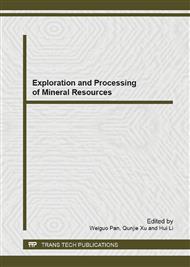p.551
p.556
p.564
p.568
p.574
p.580
p.585
p.589
p.593
Visualization Experimental Study on Organic-Inorganic Crosslinked Plugging System Plugging
Abstract:
As a compound modifying and flooding agent, the organic-inorganic crosslinked plugging system which is mixed by gel and silicide according our experimental study, formed integral crosslinked system at high temperature and varied in a broad range gelling time by regulate concentration of organic-inorganic crosslinked plugging system. It exhibits excellent thermostability, shear properties, plugging performance and washable characteristic. In this visual experiment, the organic-inorganic crosslinked plugging systems injection, waterflooding effect and sealing capacity on homogeneous reservoir and heterogeneous reservoir are all exhibited clearly. The results of experiment show that organic-inorganic crosslinked plugging system has a good injectivity and water plugging performance. Depth of injection has an important effect on water-flooding situation, further influencing the increasement of recovery factor. Before the injection of Organic-Inorganic Crosslinked Plugging System, we inject some viscosity reducer, such as foam solution which reducing the deep oil viscosity, keeping the high recovery efficiency and preventing the mistaken plugging.
Info:
Periodical:
Pages:
574-579
Citation:
Online since:
December 2013
Authors:
Price:
Сopyright:
© 2014 Trans Tech Publications Ltd. All Rights Reserved
Share:
Citation:


